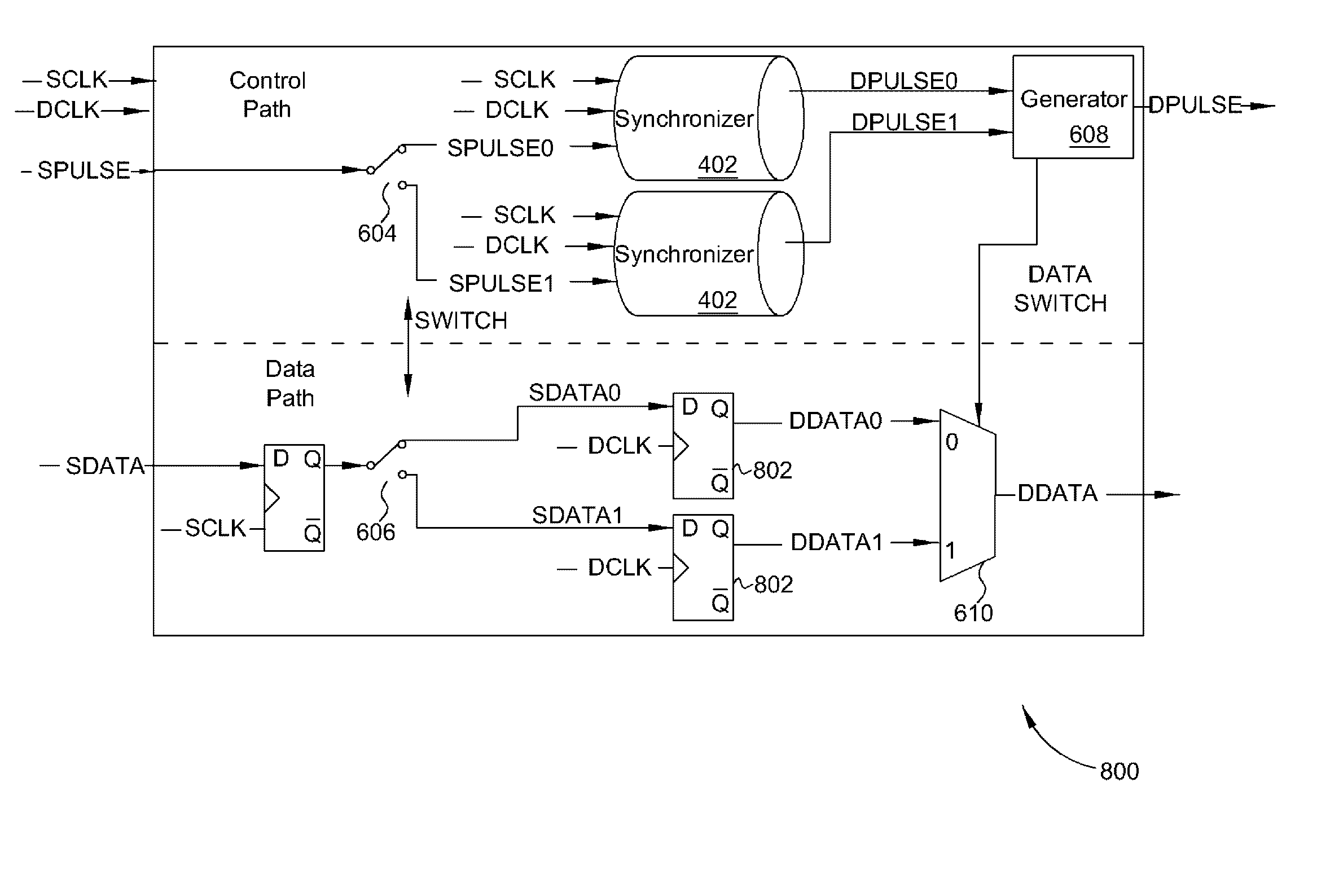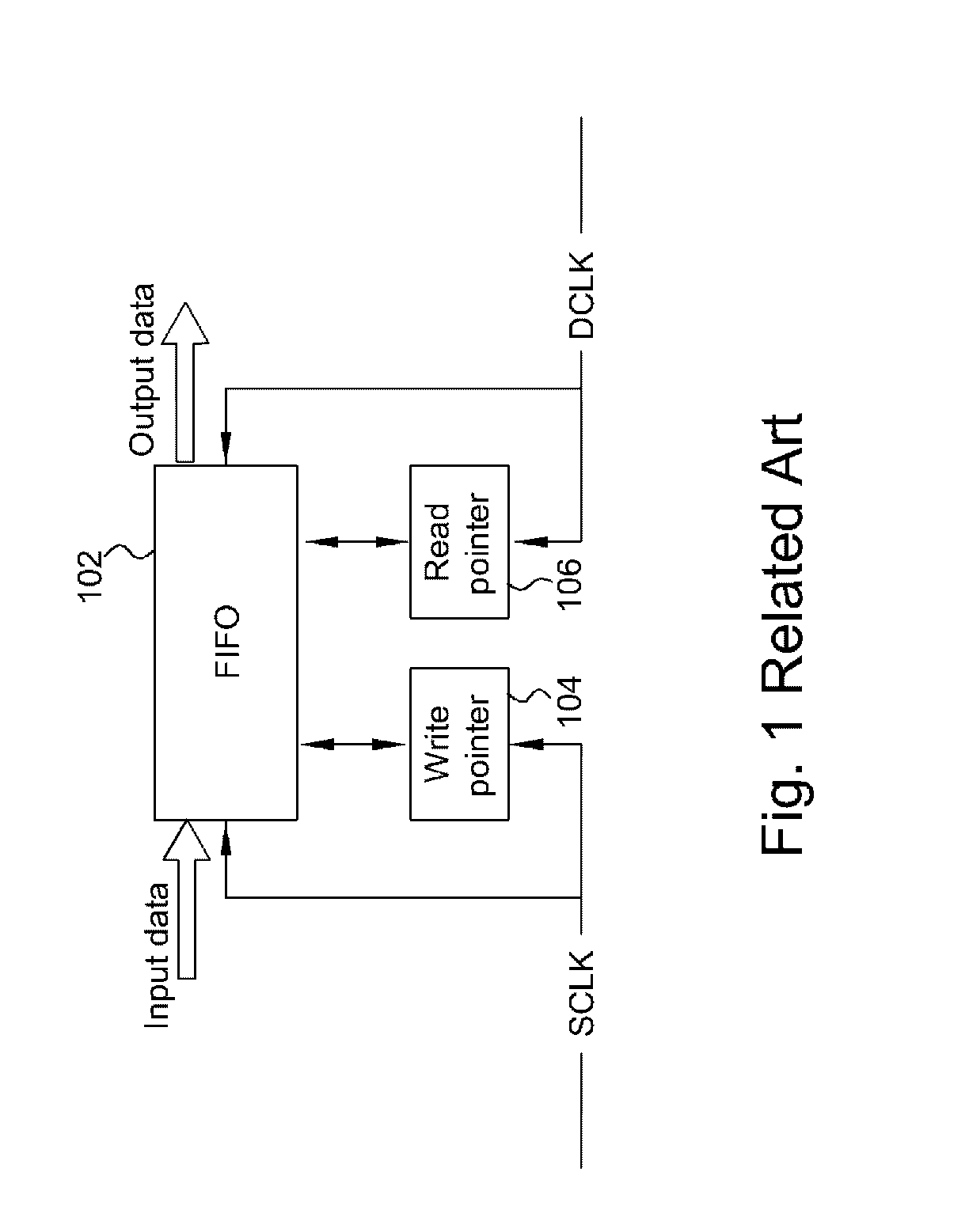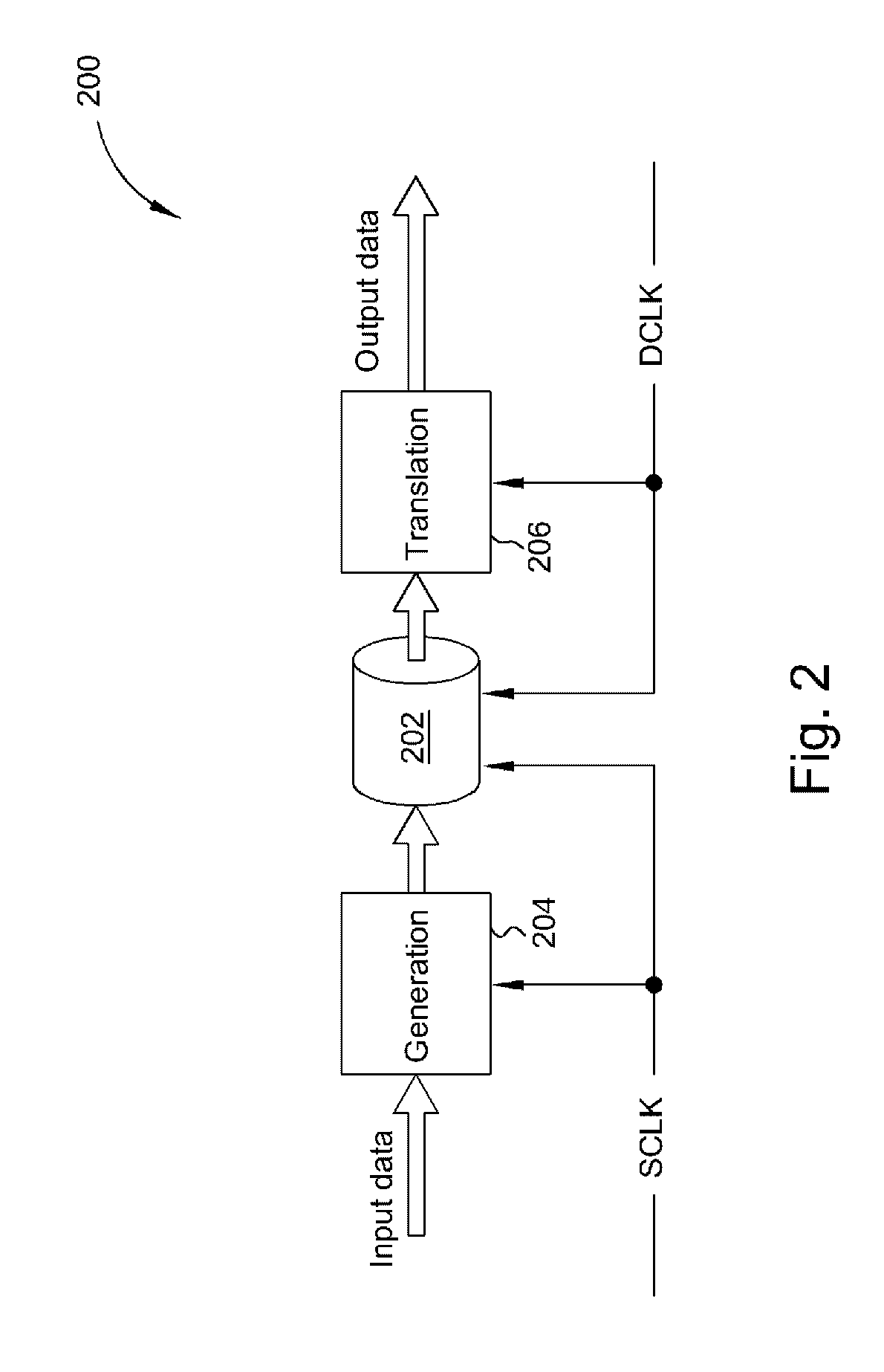Data synchronizer system
- Summary
- Abstract
- Description
- Claims
- Application Information
AI Technical Summary
Benefits of technology
Problems solved by technology
Method used
Image
Examples
Embodiment Construction
[0026] Please refer for FIG. 2 which illustrates a block diagram of a data synchronizer system 200 according to the invention. The data synchronizer system 200 includes a piped synchronizer 202, a generation circuit 204, and a translation circuit 206. The piped synchronizer 202 includes a plurality of synchronizers each for handling a part of data input into the data synchronizer system 200. The generation circuit 204 sends a part of the input data to a synchronizer of the piped synchronizer 202, and the translation circuit 206 assembles the output of the piped synchronizer 202 into the expected output data. Generally, the generation circuit 204 operates according to a source clock SCLK, the translation circuit operates according to a destination clock DCLK (the clocks SCLK and DCLK defining two clock domains), and the piped synchronizer 202 operates according to both clocks SCLK, DCLK.
[0027] Please refer to FIG. 3 which illustrates one embodiment of the piped synchronizer 202 acco...
PUM
 Login to View More
Login to View More Abstract
Description
Claims
Application Information
 Login to View More
Login to View More - R&D
- Intellectual Property
- Life Sciences
- Materials
- Tech Scout
- Unparalleled Data Quality
- Higher Quality Content
- 60% Fewer Hallucinations
Browse by: Latest US Patents, China's latest patents, Technical Efficacy Thesaurus, Application Domain, Technology Topic, Popular Technical Reports.
© 2025 PatSnap. All rights reserved.Legal|Privacy policy|Modern Slavery Act Transparency Statement|Sitemap|About US| Contact US: help@patsnap.com



